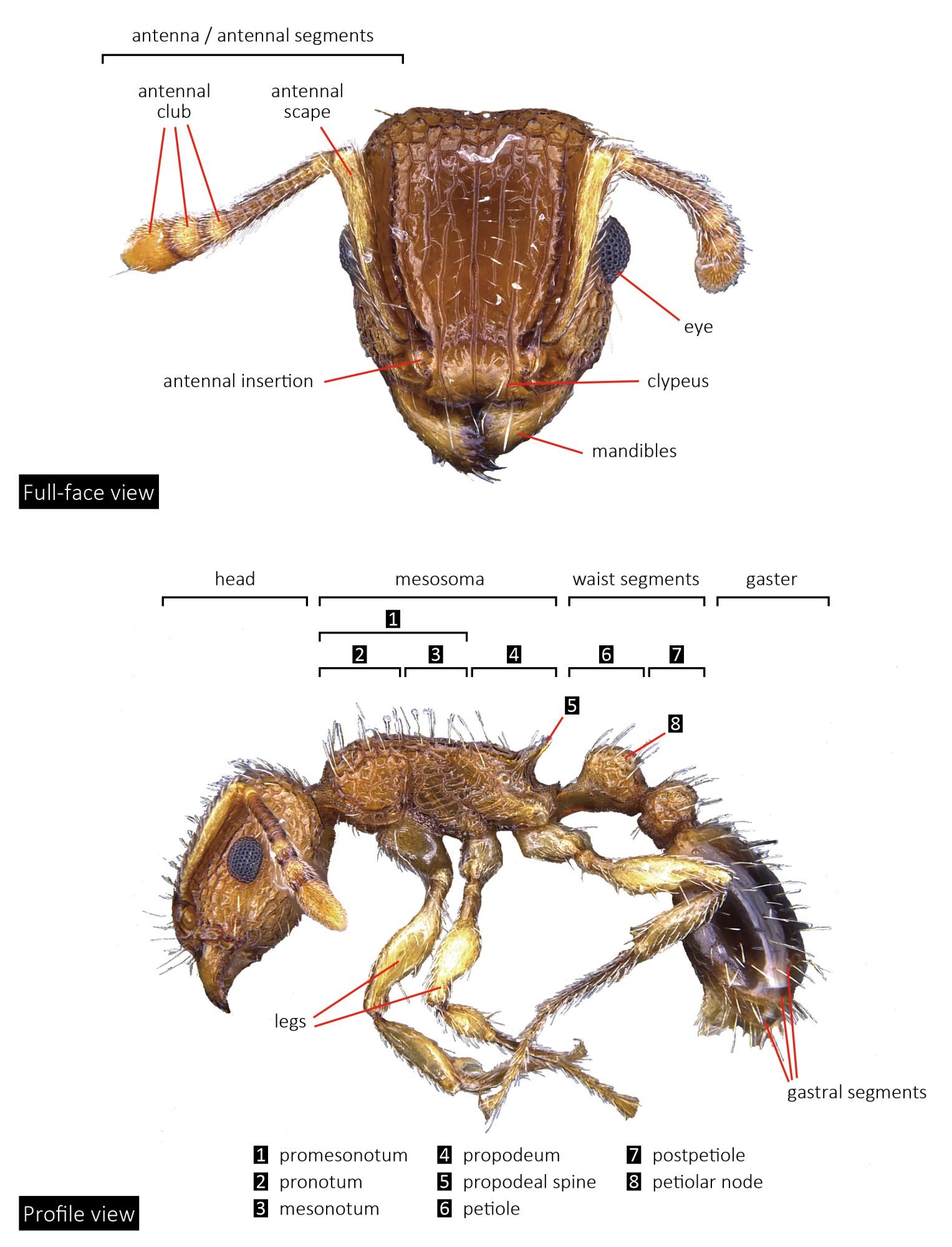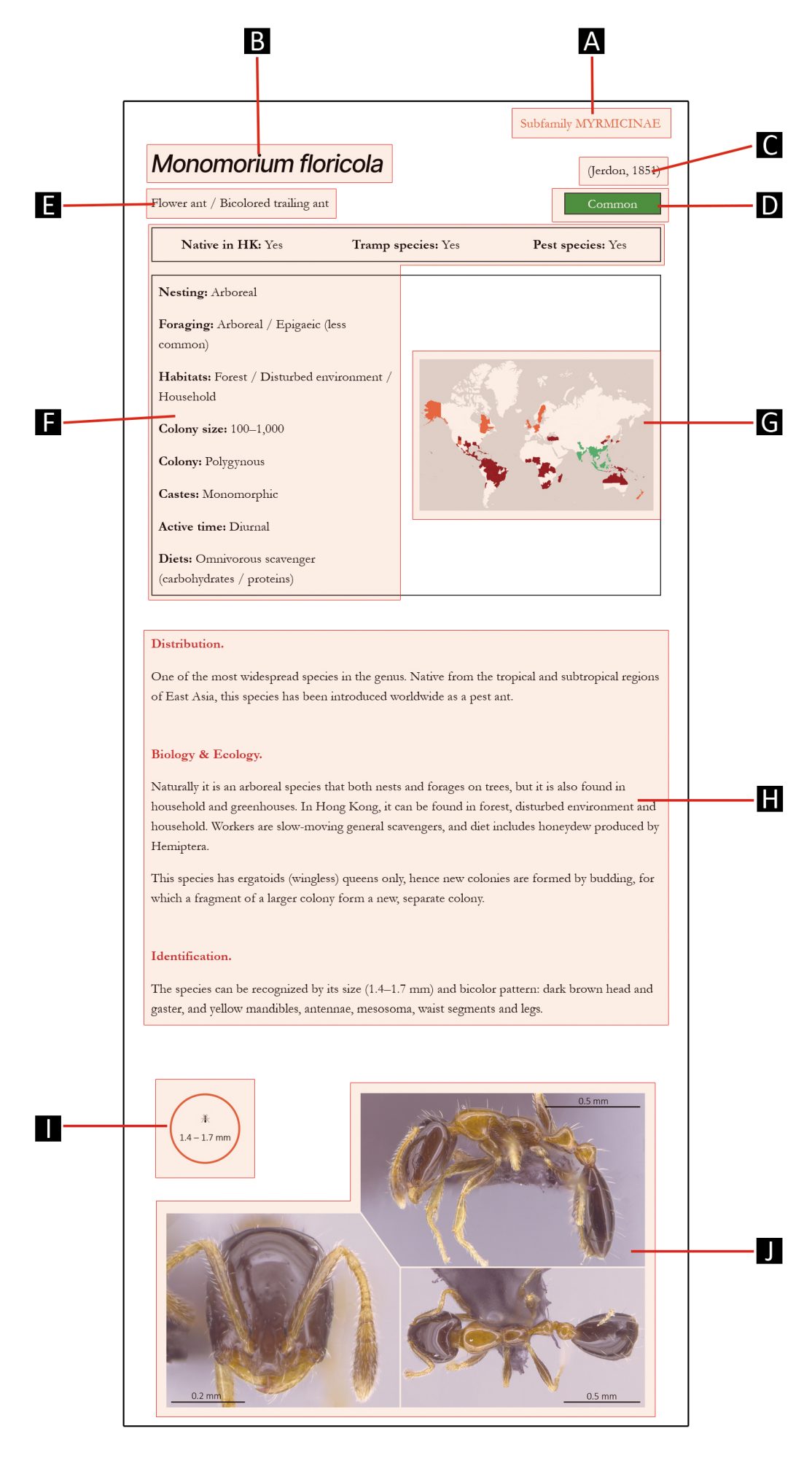
Subfamily PSEUDOMYRMECINAE
GENUS
Tetraponera
Smith, 1852
Slender ants
Distribution.
A moderate-sized ant genus with 96 species described. The genus has a widespread distribution in the tropical and subtropical regions of the Old World.
Biology & Ecology.
This genus is considered strictly arboreal, with nest located on trees. Nests are large and contain several thousands of workers.
Tetraponera species are likely general scavengers or herbivores that rely on the host plants, and may tend Hemiptera for honeydew. Many species are associated with myrmecophyte plants, for they protect their host plants from herbivorous insects, while they are offered with nesting sites and food from the host plants in return.
Identification.
Tetraponera species are small to medium in size (3–7 mm), mostly with black coloration, but some species are yellow, red or brown in color as well. They can be recognized by the characters of their subfamily (Pseudomyrmecinae): large eyes, and by having two waist segments, with the second segment (postpetiole) broadly attached to the gaster.




